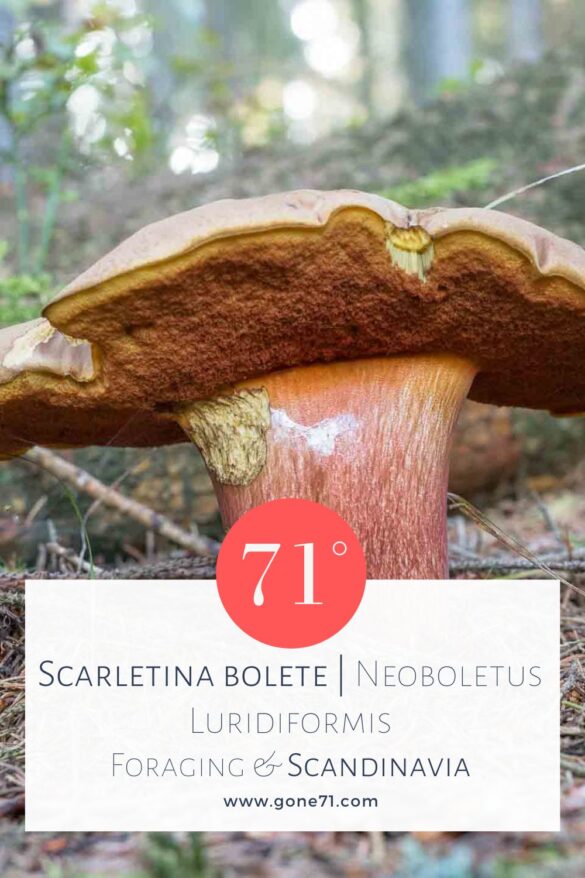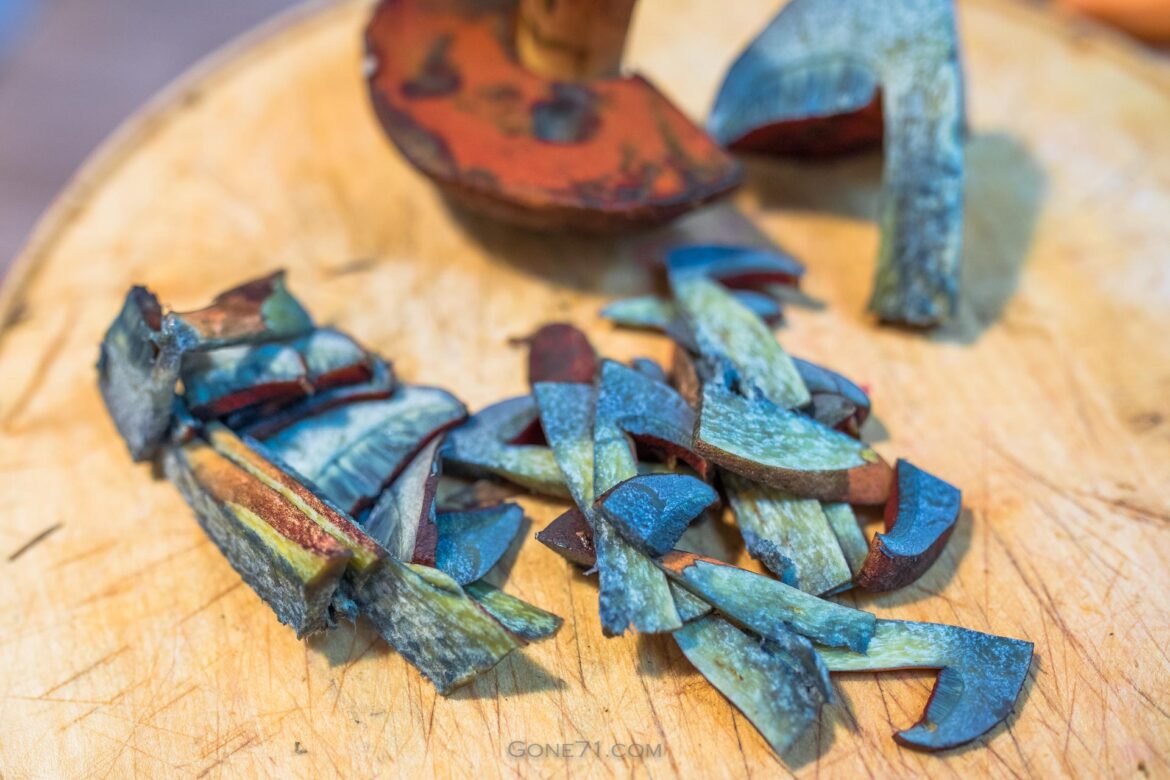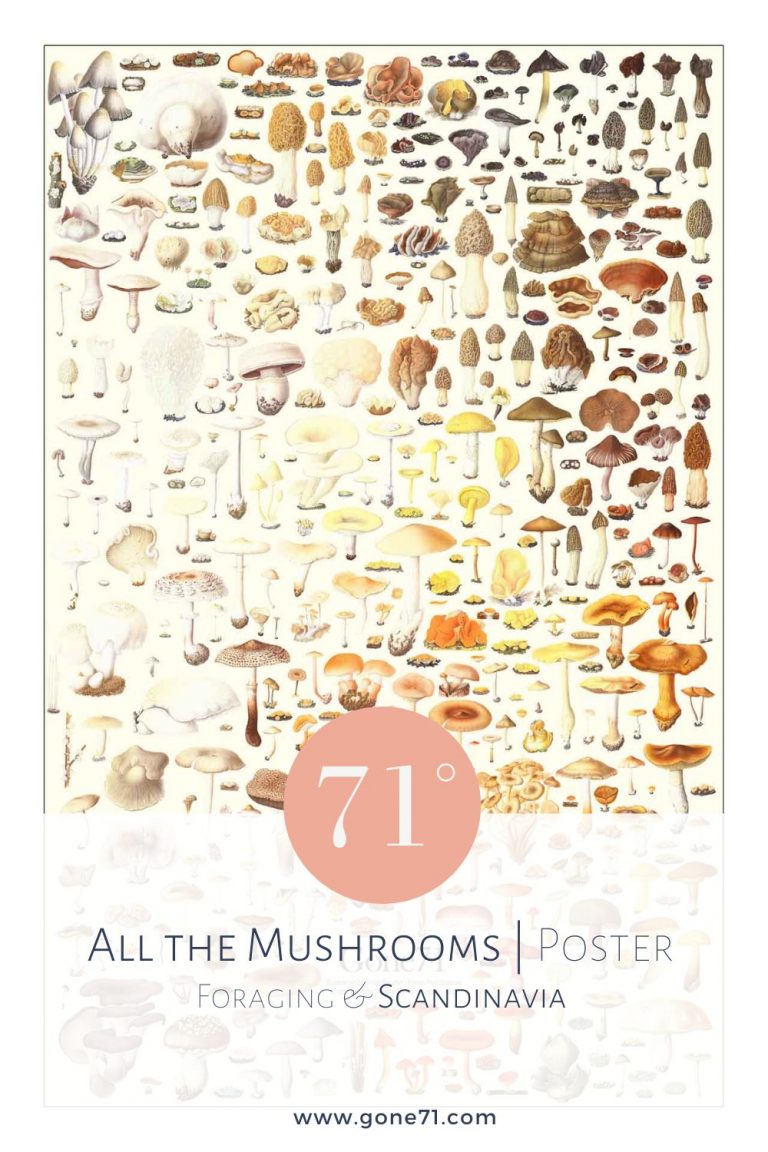swe.: Blodsopp | nor.: Blodrørsopp | fin.: Veritatti | dt.: Flockenstieliger Hexenröhrling, Flocki | sci. syn.: Neoboletus erythropus, Boletus luridiformis
The Scarletina bolete also known as red foot bolete or dotted stemmed bolete is a common mushroom in the northern hemisphere. It grows in deciduous or coniferous woods, in summer and autumn and is an excellent edible species well cooked – a little toxic raw. Be careful though – there are many (poisonous) lookalikes!
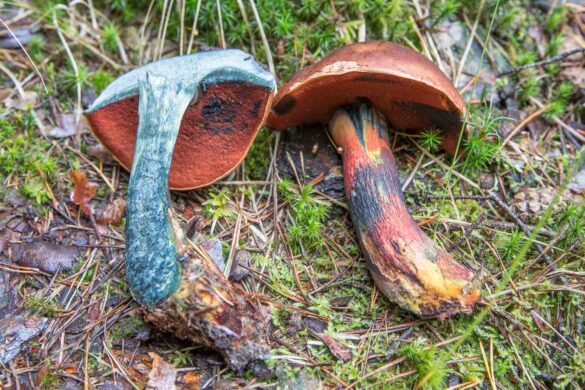
height: 5 – 15 cm
cap diameter: 4 – 20 cm
trunk diameter: 2 – 5 cm
months: June – October
colours: brown cap | red scales on yellow-brown stalk (flesh turns blue)
habitat: mixed forests
smell: pleasant
consumption: cooked (slightly toxic if consumed raw)
Appearance & habitat of the Scarletina bolete
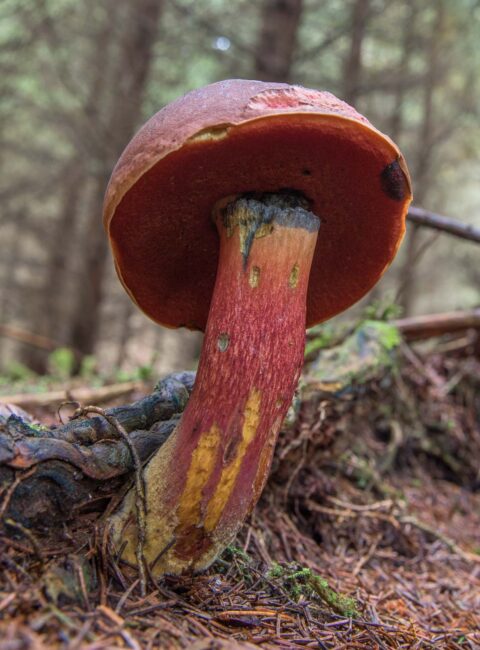
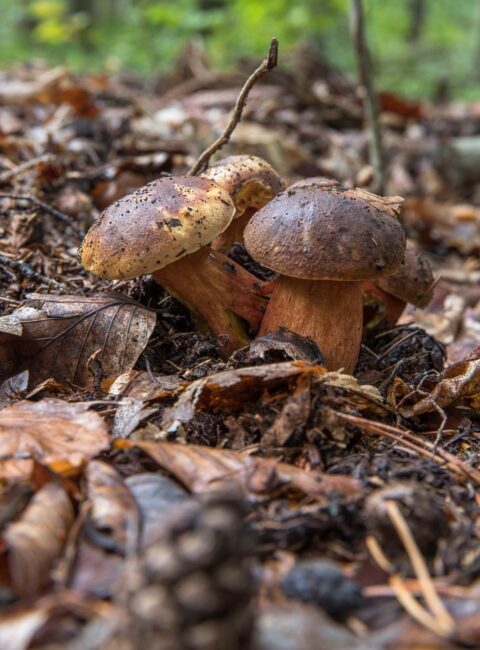
The bright yellow flesh is thick and very firm and turns strongly blue when cut, then turns dark red a little later. The smell is slightly fruity and the flavor sweet and pleasant.
The scarletina bolete is a mycorrhizal fungus that lives in symbiosis with conifers, primarily spruces but occasionally also with beeches or oaks. In Europe it can usually be found as early as May, making it one of the first mushrooms to appear on the mushroom scene. The growth time extends into the autumn.


Lookalikes
Unwary foragers can confuse these species with a variety of (poisonous) mushrooms. High caution and good knowledge of the subject is therefore adviced when foraging Scarletina boletes.
Satan’s bolete (Rubroboletus satanas)
The very poisonous Satan’s bolete or Devil’s bolete (Rubroboletus satanas), which turns only moderately blue when injured, has a stalk net and (especially when young) a much lighter gray hat color. When cut, the flsh turns only slightly blue and usually less than the Scarletina bolete.
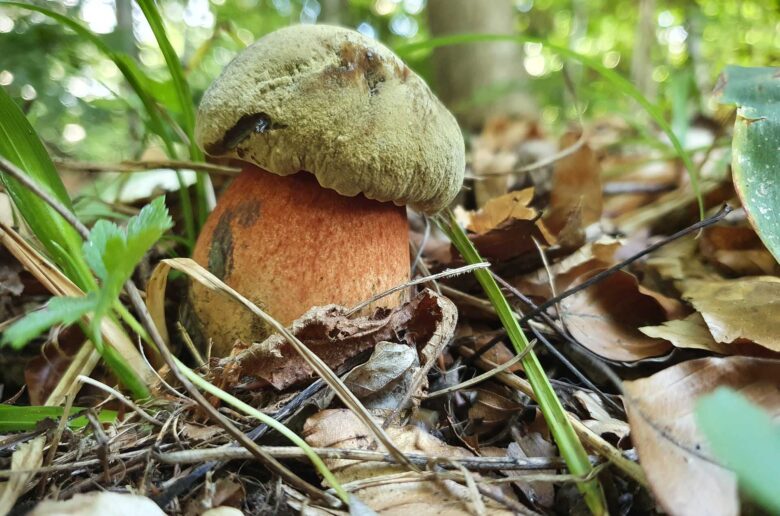
Suillellus rhodoxanthus
Another poisonous candidat very similar to the Devil’s bolete in appearance is Suillellus rhodoxanthus (dt. Blasshütiger Purpurröhrling, swe. rosensopp, fin.: ruusutatti) which has a much lighter greyish cap and an intense red net on a yellow stem. Like several other red-pored boletes, it stains blue when bruised or cut.
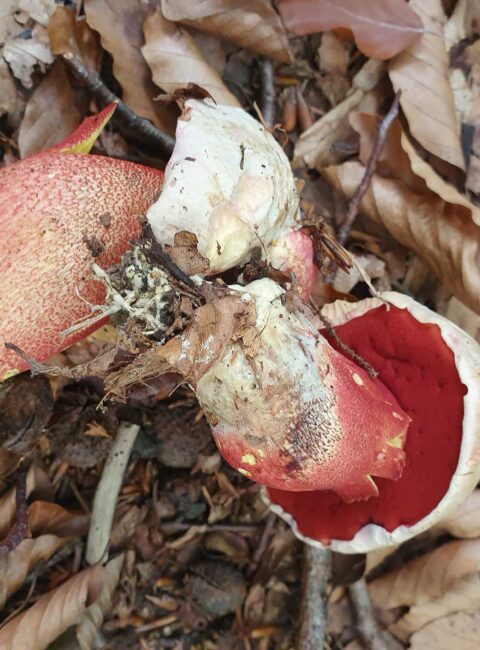
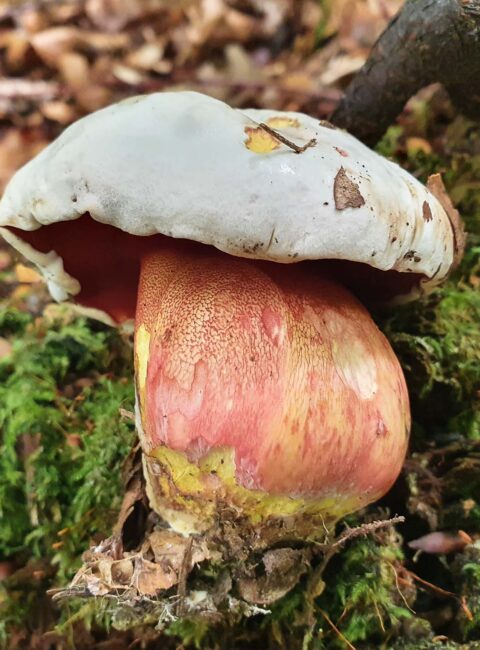
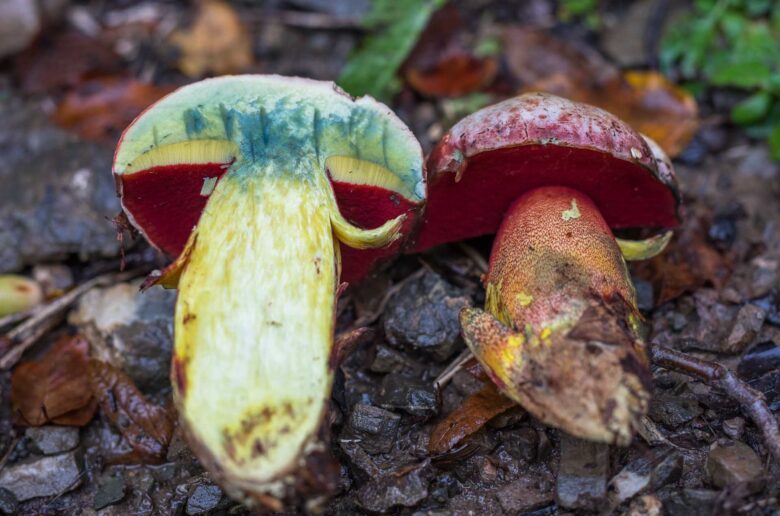
Bitter beech bolete (Caloboletus calopus)
The bitter beech bolete is another bluing and slightly poisonous mushroom that has been known to be confused with the Scarletina bolete. Despite its very attractive appearance, consumption can lead to longer-lasting gastrointestinal disorders.
The light brown-capped mushroom has intense yellow pores that turn blue when pressure is applied. The yellow stalk has a strong color gradient into red towards the base of the stem. The flesh is yellow and stains also blue when bruised or cut.
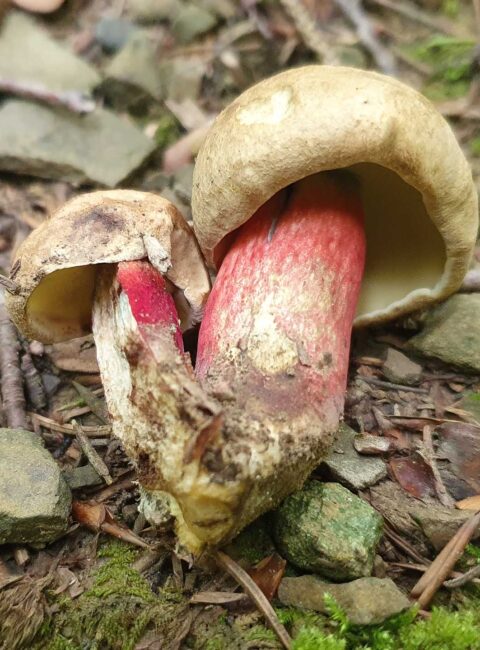
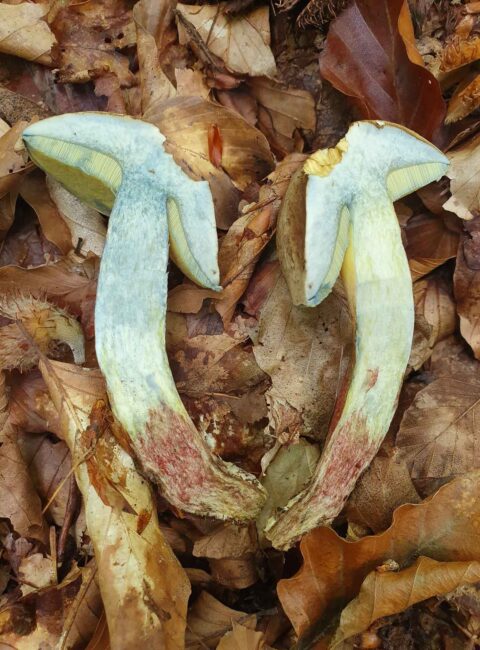
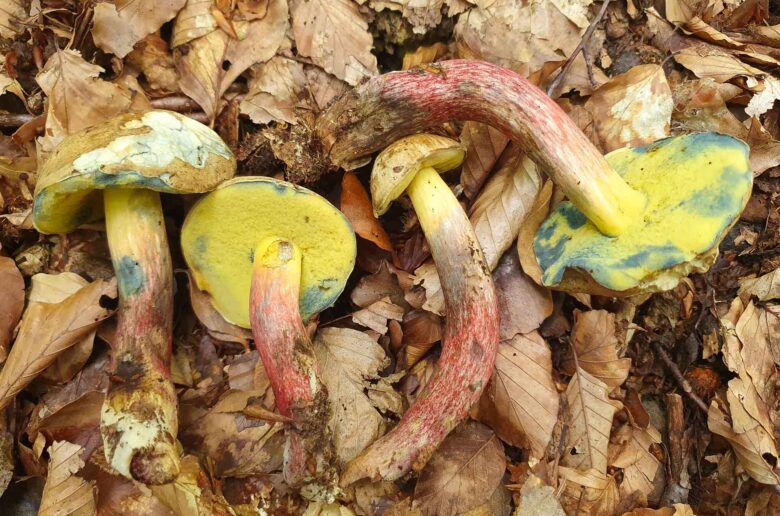
Luride bolete
Much more similar is the Luride bolete (Suillellus luridus), which is in principle also an edible species when heated. It has a netted drawing on the stem and a slightly lighter brown cap-colour. The pores are yellow and the pore-endings are tinted orange-red to orange-yellow. Luride boletes are suspected to cause adverse reactions when combined with alcohol similar to those caused by the compound coprine. However there is no real evidence for that. Due to it’s similarity to the Satan’s bolete it is often adviced not to collect this mushroom at all.
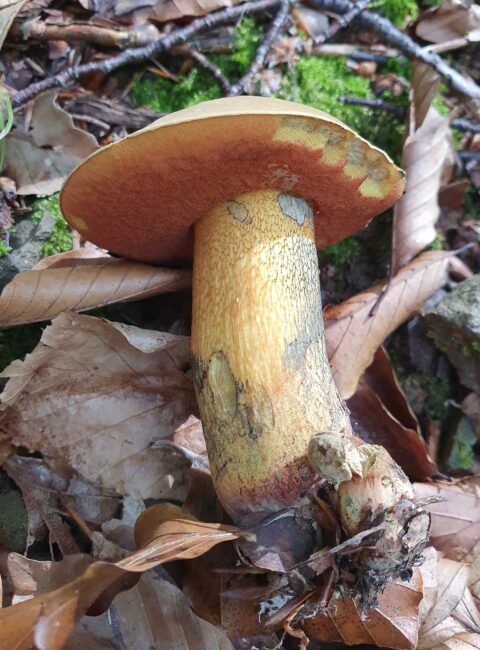
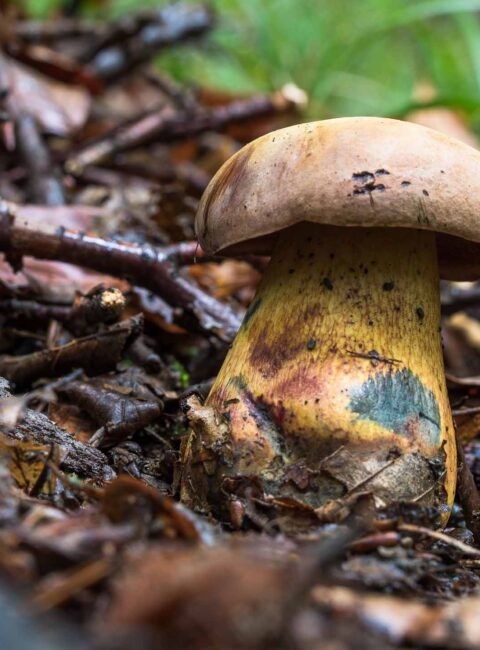
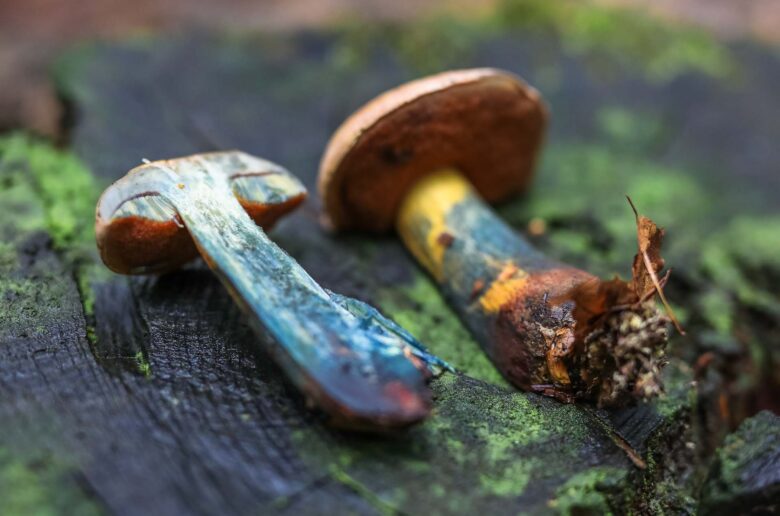
These are just a few of the potential sources of confusion and the list goes on.
Scarletina bolete in the kitchen
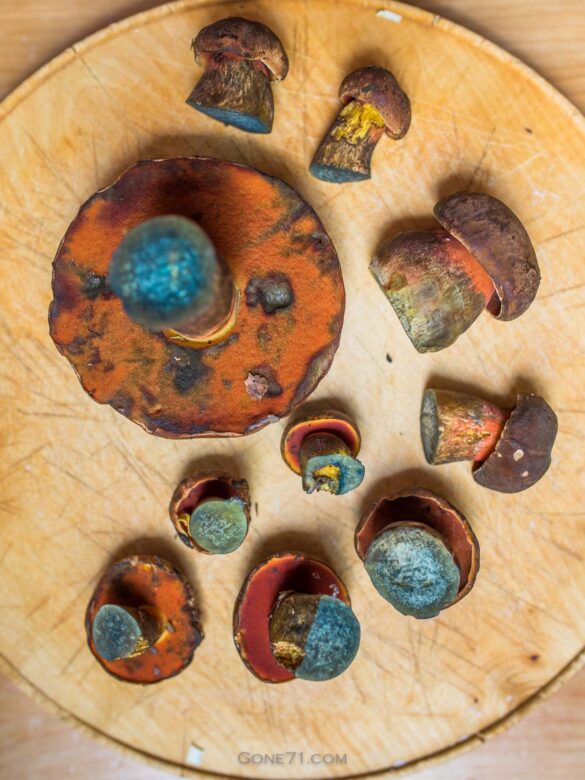
Due to the many potentially very toxic mix-ups, the Scarletina bolete should only be collected by very knowledgeable foragers. In some mushroom books, collecting is discouraged entirely due to its resemblance to the satan’s bolete.
Nevertheless, the Scarletina bolete is considered an excellent edible mushroom in many regions of Europe. Some even put its culinary skills above those of the porcini mushroom. A proverb in southern Germany says, for example, that a mushroom soup without Scarletina bolete is not a real mushroom soup and that it should not be missing under any circumstances.
It is very versatile in the kitchen and you can confidently fall back on most recipes that also come into question for porcini.
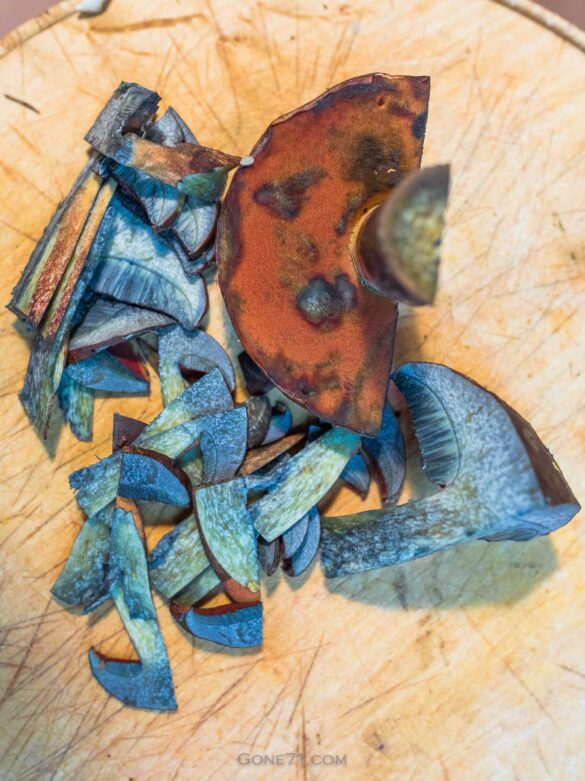
Recipe
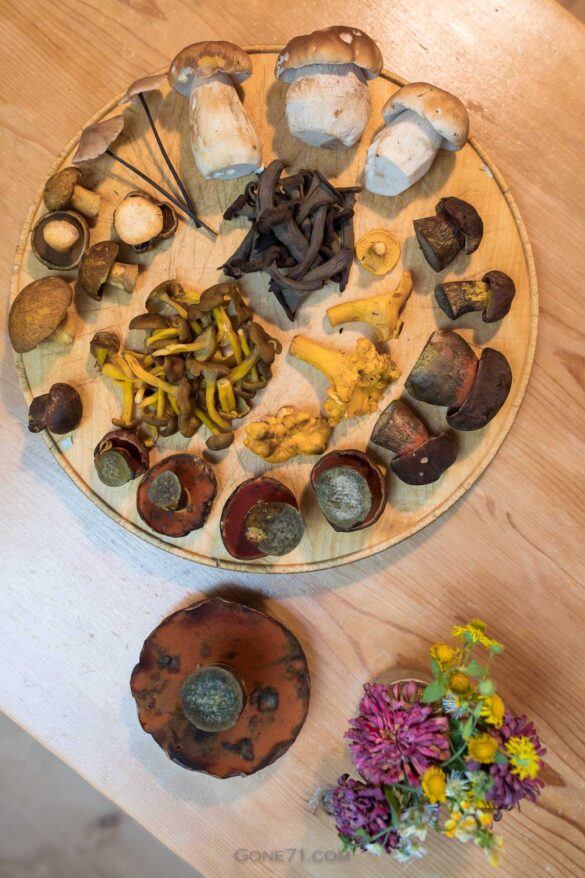
In our recipe we use the Scarletina bolete as a mixed mushroom in a traditional mushroom soup. This colorful and beautiful mushroom is an enrichment for every mushroom soup if you know how to identify it correctly!
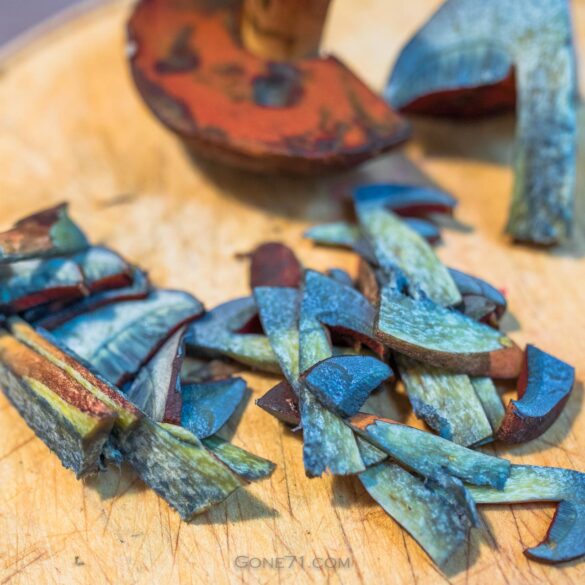
Scarletina bolete mushroom soup
Ingredients
- 800g Scarletina bolete and other mushrooms of your choice and availability (chanterelles, yellow foot, porcini, velvet bolete, black trumpets, garlic parachute...)
- 3 carrots
- 1 onion
- 5 potatoes
- Salt
- pepper
- Parsely
- olive oil
- 100ml white wine
- 2-3l vegetable stock
Instructions
- Cut the onion into small cubes
- Cut the potatoes and carrots into small cubes as well
- Thinly slice the ready-to-cook mushrooms and set aside
- Briefly sauté the onion in olive oil
- Add the carrots, potatoes and mushrooms
- Salt, stir well and let everything simmer together briefly.
- Deglaze with white wine and pour in the vegetable broth.
- Let the soup simmer for about 20-30 minutes – at least until the potatoes and carrots are tender.
- Season to taste and serve with chopped parsley (or chives).
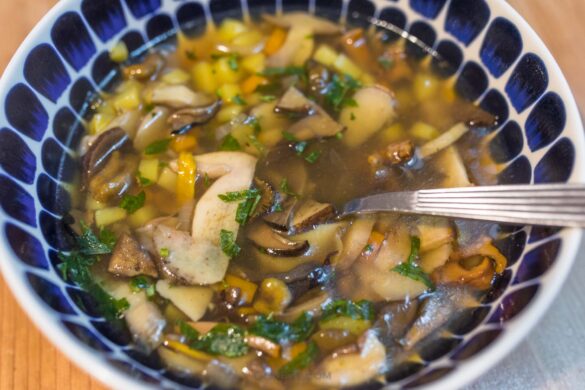
We have compiled this overview with the best of knowledge and belief, but do not claim to be complete and reserve the right to make errors.
Learn more about poisonous mushrooms and mushroom poisons here
↓↓↓
Find some inspiration in other mushroom recipes
↓↓↓
